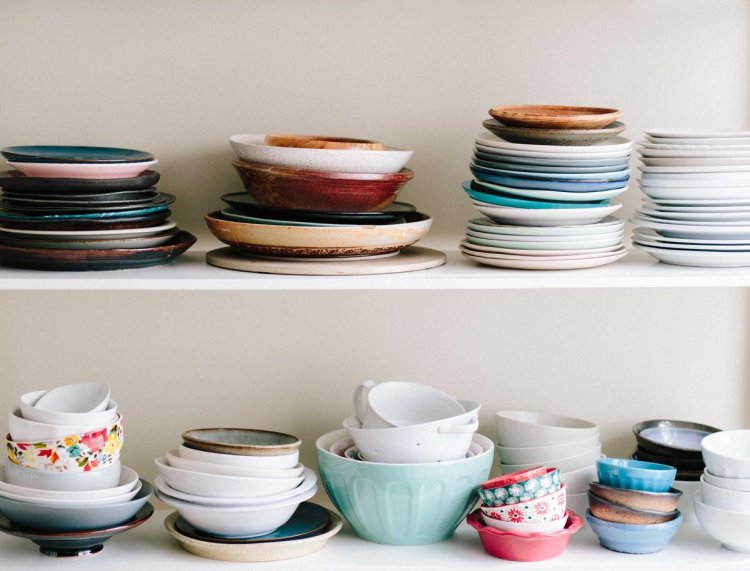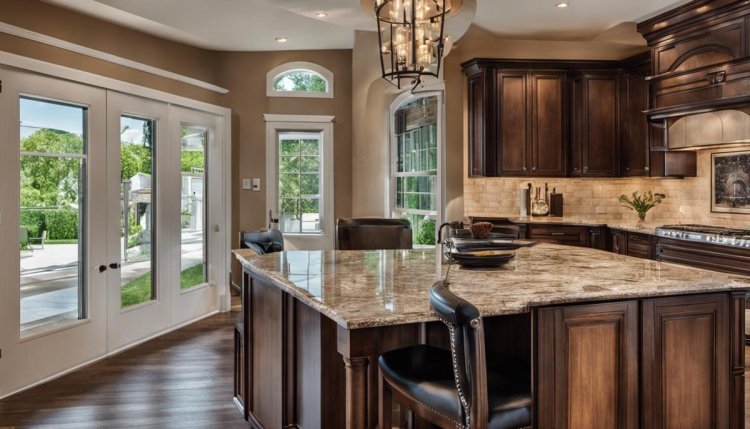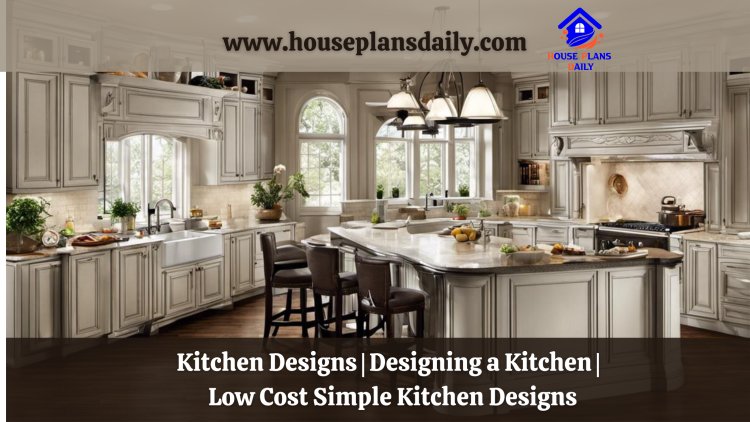Kitchen Designs | Designing a Kitchen| Low Cost Simple Kitchen Designs
In every home, the kitchen is the heart - the place where meals that fuel the body and soul are prepared, where laughter and conversations simmer. It is a space where design and functionality blend together to create an environment that is both inviting and efficient. This in-depth exploration of kitchen design will guide you on a journey through the different facets of this essential space - from understanding diverse layouts like L-shaped, U-shaped, single-wall, and island kitchens, to making informed choices on cabinets and countertops. Within these paragraphs, you'll find insights into the varying materials - granite, marble, quartz, wood, laminate, and stainless steel - their cost, durability, and maintenance requirements. Additionally, we'll discuss how to select the right appliances and fixtures that coexist harmoniously with your kitchen design. We'll venture into the world of color schemes and lighting, discussing the power of color in relation to your kitchen walls, cabinets,
Understanding Different Kitchen Layouts
Deciphering Various Kitchen Layouts
The functionality, flow, and look of a kitchen are heavily dictated by its layout and design. The L-shaped kitchen is one of the most prominent designs, featuring a right angle formed by two walls or sections of counter space. This design is favored for its spacious counter area and open floor plan, allowing extra room for dining spaces or an island. However, work areas can feel somewhat disconnected if due consideration isn't given to the design.
In contrast, U-shaped kitchens encompass three walls equipped with appliances and cabinets. This configuration is ideal for those who require substantial storage and counter areas, as it enables efficient access to all kitchen zones. However, this design may feel a bit tight, particularly in smaller spaces, and doesn't naturally lend itself to be inclusive of islands or dining tables.
Single-wall or pullman kitchens work best in loft spaces or studios with limited kitchen area. This design places all appliances and cabinets on a single wall, saving space and making it cost-effective. On the downside, compared to other designs, it offers restricted counter and storage areas.
The island kitchen features a standalone workspace at the kitchen's center. This flexible design offers additional seating, storage, or workspace, and encourages socializing, letting the cook interact with family or guests while cooking. The drawback is that island kitchens necessitate plenty of space and, if poorly designed, the island may disrupt the workflow.
Remember that the kitchen design you choose will dictate its functionality and convenience. So, crucial factors such as the kitchen's size, storage requirements, your cooking habits, and budget need to be considered. Each layout has its own pros and cons, hence understanding these can help make a well-informed decision regarding your kitchen's design.

Selecting Kitchen Cabinets and Countertops
Understanding the Importance of Kitchen Cabinets and Countertops in Design
When designing a kitchen, the selection of cabinets and countertops is a primary consideration. Both these components greatly influence the kitchen's appearance, function, and longevity.
The countertop is one of the busiest surfaces in any kitchen, and its material significantly contributes to the kitchen's overall style. From food preparation to placing groceries or even dining, the countertop sees a lot of activity. Common choices include materials like quartz, marble, and granite, all of which have their unique set of advantages and disadvantages to consider.
Granite, Marble, and Quartz Countertops
Granite countertops are extremely durable and resistant to heat and scratches. They offer a classic and timeless appeal to many kitchens. However, granite is a porous material and requires regular sealing to prevent stains and damage.
Marble countertops, on the other hand, have a luxurious and high-end appearance. Their bright, natural pattern can lighten up any kitchen. However, marble is even more porous than granite and is susceptible to stains and etching from acidic foods and drinks.
Quartz countertops are a popular choice due to their stunning aesthetic and easy maintenance. Unlike granite and marble, quartz is a non-porous material, making it resistant to stains without the need for sealing. However, they are not as heat resistant as granite or marble and can get damaged if a hot pan is placed directly on the surface.
Wood, Laminate, and Stainless Steel Cabinets
When it comes to cabinets, wood, laminate, and stainless steel are popular choices. Wood is a classic choice for kitchen cabinets, offering warmth and natural beauty. It's durable but requires regular cleaning and occasional sealing to maintain its look.
Laminate cabinets are made of a synthetic material that is extremely durable and easy to clean. They come in a variety of finishes and colors. They are less expensive than wood but can peeling or cracking over time.
Stainless steel cabinets offer a sleek, modern look. They are extremely durable and resistant to heat and stains. However, they can show fingerprints and scratches easily, and are generally more expensive than the other options.
Cost and Maintenance Considerations
The cost associated with these choices varies greatly from material to material. Granite and marble countertops can be more costly than quartz, while wood cabinets can be more expensive than laminate or stainless steel.
Maintenance also varies by choice. For instance, granite and marble countertops might need sealing every once in a while, while quartz does not. Wood cabinets might need re-staining or sealing, while laminate and stainless steel cabinets can generally be cleaned with a simple wiping down.
Deliberations for Kitchen Design
Determining the perfect materials for your kitchen countertops and cabinets requires striking a balance between aesthetics, cost, and practicality. Knowing the advantages and drawbacks of every choice assists you in making an informed decision that perfectly aligns with your lifestyle and aesthetic preference.

Choosing the Right Appliances and Fixtures
Deciphering Kitchen Appliance Choices
Kitchen apparatuses present a diverse range of designs, styles, and sizes to match all types of cooking requirements and tastes. For example, refrigerators come in side-by-side, top-freezer, or bottom-freezer models, each offering unique advantages in terms of storage capacity and ease of access. Contemporary refrigerators often include additional features, such as water dispensers, ice makers, and adjustable shelves for further customization.
Similarly, dishwashers have progressed to be even more energy-saving and quieter than before, with features like soil sensors, which adjust the wash cycle time based on the load's dirtiness, and rapid wash settings for time-critical cleaning. When deciding on a dishwasher, consider factors like the arrangement of racks, size, and its position in your kitchen layout.
The designs and programming options for microwaves and ovens can vary significantly, and can either be built-in or placed on the countertop, depending on the available space in your kitchen and your specific needs. Important factors to consider when choosing these appliances include their size, wattage, and the variety of pre-set cooking features offered.
Identifying Optimal Kitchen Appliance Placement
The arrangement and placement of these appliances greatly affect the kitchen’s functionality and workflow. The “kitchen triangle”, a concept used by kitchen planners, encompasses the refrigerator, stove, and sink - the three areas where much of the cooking activity occurs. For optimum efficiency, these three appliances should form a triangle to minimize movement while cooking.
Choosing the Right Sink and Faucet
Sinks and faucets are crucial parts of a kitchen, and their style and placement should align with the kitchen’s design. Sinks can be made from different materials such as stainless steel, porcelain, or granite, each with their unique aesthetic and durability benefits. They also come in varying sizes and shapes, with options for single or double bowls.

Faucets, on the other hand, should match the sink in style and utility. They can be pull-out, single handle, or double handle, and can have features such as a sprayer for easy dish rinsing or a pot filler. Often, homeowners choose a faucet based not just on looks, but also on its functionality and ease of use.
Optimal Lighting for a Functional Kitchen
One essential component of an effective kitchen design revolves around well-chosen lighting fixtures. Lighting in the kitchen is primarily divided into task lighting, used in high-performance areas such as countertops and the stove, and ambient lighting, which brightens the entire room. In addition, accent lighting can be used to emphasize specific spots or features within the kitchen. Important considerations in selecting kitchen lighting include brightness, energy efficiency, and aesthetic design. A variety of lighting options - recessed lights, pendant lights, or under-cabinet lights - are available to ensure that your kitchen is both welcoming and functional.

Color Schemes and Lighting
Creating a Cohesive Color Scheme
Picking the right color scheme for your kitchen entails more than just appealing colors – it should be considered within the context of your home's overall aesthetic. A coordinated and balanced design should encompass the walls, cabinets, and countertops of the kitchen.
Many kitchens opt for a two-tone color scheme, utilizing a primary and an accent color to ensure equilibrium and avoid an overwhelming feeling in the space. The primary color, usually neutral, is used on larger areas like cabinets and walls. Accent colors add depth and character, and they find their place on smaller elements like bar stools, backsplash tiles, or appliances.
When considering color, cabinets are an essential element. Neutral shades like white, gray, or beige are popular choices for cabinets since they mesh well with a variety of colors and create a refreshing, neat atmosphere. For a deeper, more elegant feel, one can consider darker shades like navy or forest green.
Countertops contribute significantly to the overall color scheme, and thus, they should smoothly blend with both the cabinet and wall colors. Neutral-colored countertops such as white quartz, gray granite, or natural wood are a favored choice among homeowners.
The key to successful color cohesion is to account for the 'flow' of your home. In open houses, ensuring that the kitchen color blends seamlessly with the rest of the house is crucial. A careful overview of your house's color scheme would be beneficial before finalizing your kitchen palette.
Understanding Kitchen Lighting
Kitchen lighting is just as essential for function as it is for creating a warm and inviting environment. There are various types of kitchen lighting that serve different purposes: ambient, task, and accent lighting.
Ambient lighting refers to general lighting that illuminates the entire space evenly. This is usually achieved through ceiling lights, including recessed lights and surface-mounted fixtures. It provides a comfortable level of brightness, allowing you to see and move around safely.
Task lighting emphasizes specific areas where more light is needed, like countertops, sinks, or over a kitchen island. It ensures these workspaces are properly lit for safe meal preparation. Under-cabinet lights, pendant lights, or track lighting are common options for task lighting.
Accent lighting highlights design elements or architectural features of the kitchen, like open shelves or artwork. It helps set the mood and adds visual interest to the kitchen. To establish accent lighting, consider wall sconces, spotlights, or light strips.
When planning the lighting layout for your kitchen, multiple light sources at different levels can work wonders. This layered lighting approach helps create depth and ambiance making the kitchen feel more inviting.
Also worth considering is the color temperature and luminosity of the light bulbs. Warmer hues can create a cozy, welcoming atmosphere, while cooler blue-toned lights can render a sleek, modern vibe.
To conclude, a well-thought-out mixture of color scheme and lighting creates a visually appealing balance to your kitchen and can set the mood for your entire house. Keep in mind that these must align with other elements of your home decor for a harmonious overall aesthetic.

As a cornerstone of daily life, the kitchen is more than just a place for cooking - it’s a symbol of health, nourishment, and unity in your home. The design of this crucial space, including the layout, cabinets, countertops, appliances, fixtures, colors, and lighting, directly impacts its function and ambiance. Armed with a fundamental understanding of various kitchen layouts and the pros and cons of different materials for cabinets and countertops, you can make well-informed decisions that mirror not only your functional needs but also your unique style. Additionally, the careful selection of appliances and fixtures not only maximizes the kitchen's utility but also complements the design. Lastly, the considered application of color schemes and appropriate lighting can transform your kitchen into a warm and inviting space that truly reflects your home's aesthetic. So, whether you're remodeling or moving into a fresh space, use this knowledge to shape your kitchen into a haven of culinary creativity and familial warmth. The heart of your home awaits your personal touch!













